Game Design's New Maxim: Do Not Waste The Player's Time
By Mento 17 Comments
There's been a schism, of late, within the video game industry. No, not that one, but there's definitely some overlap with that whole unfortunate ordeal and a much larger one that lies within the very soul of video game design. Kind of a "big picture" thing. I'm talking about how the tenets of video game design have shifted the central paradigm from "be fun" to something entirely different.
What do I mean? Well, "be fun" worked for a long time, largely because it made sense from both a consumer standpoint and a marketing standpoint. If a game's fun, people will want to play it (and play it a lot), and people will pay for that opportunity (and, therefore, pay for it a lot). When talking about video games in their earliest incarnations, as Arcade cabinets that made their moolah one quarter (or nickel, even) at a time, being fun was always the most important consideration for a game designer to base their creations around. Games needed to be: simple to comprehend, but challenging to beat (the old "easy to play, hard to master" conceit); have great sound and graphics, though this was more to draw people in than keep them there; and fun, beyond everything else. Fun meant the difference between an Arcade game that drew a crowd around it and was constantly in use and one that received a few halfhearted playthroughs per hour by some passing curious kids.
We've moved on from that time in many respects. Games are now bought in a single transaction (well, I suppose that's starting to become less true again, if this "Forward Operating Base" microtransaction furor with the new Metal Gear Solid V is any indication) and are now judged on the amount of longevity and satisfaction a player is able to derive comparative to the initial monetary investment. We've dropped things like "lives" and "continues" because many players find nothing enjoyable about having to replay the same parts of the game over and over to get back to where they last were (though, again, plenty of roguelikes and roguelites are demonstrating that there's still some lasting appeal in that restart-from-scratch process too). One of the most recent and fundamental differences, however, is the idea that games aren't always intended to be fun. Sometimes they're designed to be an interactive experience meant to confer drama, melancholy or any other number of emotional states generally not prompted (at least deliberately) from a video game experience. A form of artistic expression that often utilizes the medium to draw the player (or, I suppose, "the patron") into a heightened sense of empathetic understanding of the material. When you read about a person having to euthanize a pet, it tugs at the heartstrings; when forced to perform the act on their behalf with a button press, it's practically unbearable. Indies have been discovering how to use video games as an enhanced storytelling medium for years, and we're starting to see it with bigger projects now that everyone's grown more accustomed to the concept. Heck, remember that "pay your respects" button in Call of Duty: Advanced Warfare? It might have been dumb, but it was also an indicator that developers are trying to get players more invested in video game narratives.
So where does that leave "be fun" as the core maxim of video game design? A game like Papers, Please or Cart Life aren't exactly "fun". Choosing which of the survivors to keep alive in Telltale's The Walking Dead series isn't really "fun" either. These games still have their fans and are highly acclaimed, however, almost in spite of this lack of "fun-ness". Instead, I've determined through playing many modern games that we've shifted "be fun" to the slightly more pragmatic "don't waste the player's time".
While a game doesn't need to be fun, it does need to be good. And in order to attain a quality as incredibly vague as "good", I think some important factors are that A) it should concise in the sense that a game only ever needs to be as long as it ought to be and that B) it shouldn't be needlessly frustrating in the numerous ways a game can be. Other factors like "challenging" or "addictive" (or perhaps a word with fewer negative connotations, like "engrossing") or, indeed, "fun" are definite bonuses but are not generally speaking what every game is aiming for, and I think it's fair to respect any game that chooses to eschew those traits and bravely go off the beaten path. What I will absolutely still maintain as important, however, is that no video game wastes the player's time unjustly.
I'm going to throw a few examples around to expand on precisely what I mean. In some cases, these are games that excel by sticking to this maxim in various ways; I respect that "do not waste the player's time" is fairly ambiguous, and needs some clarification with empirical evidence. In other cases, these are games falter (or begin to feel outdated with some slightly older games I've included) because they, conversely, disrespect the player's time. Because I feel this design philosophy is universally applicable, I'm just going to pull the last seven games I've beaten as examples:
Dragon Age: Inquisition
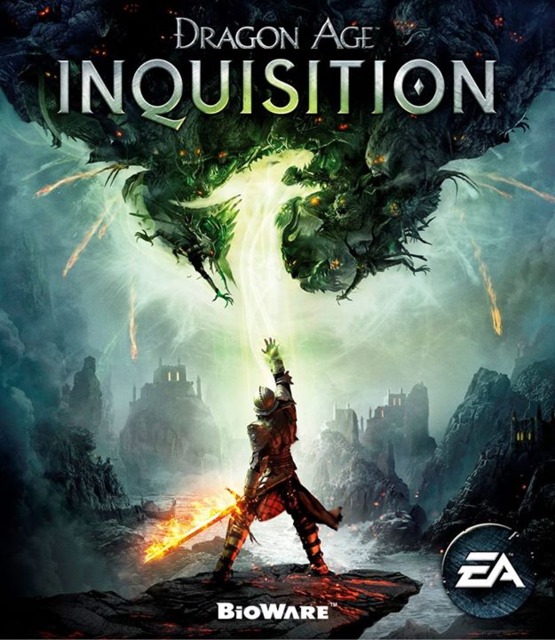
Dragon Age: Inquisition is the newest game in Bioware's Dragon Age franchise, which boasts an original fantasy universe (at least in terms of geography and lore) that presents its stories with an "A Song of Ice and Fire" approach in how the game will just as frequently involve the player in the political maneuvering and diplomacy of Thedas as it will drop them on a map to let them hunt its monsters and unearth its forgotten treasures. After the divisive Dragon Age II, which opted to streamline a lot of the sluggish mechanics to the displeasure of those who appreciated the depth of strategy that was sacrificed for the sake of expediency, Dragon Age: Inquisition carefully balances tactical depth and breezy action RPG gameplay.
A recent wave of RPGs from either side of the Pacific have begun to explore the open-world concept. Perhaps driven by observing how often Bethesda kills it with sales figures whenever a new Fallout or The Elder Scrolls game comes along: huge worlds filled with incidental areas to explore and side-quests to track. When we come back to that "don't waste the player's time" maxim, it's hard to judge these immense games for the content they provide. Simply put, and perhaps counterintuitively, these games aren't big time-wasters. At least, not by design. It is the nature of an optional open-world environment that the player is free to explore or ignore as much of it as they wish. If the player doesn't completely ignore the central storyline, they can reach a point in which they are satiated with the non-crucial exploration and go back to the central narrative's critical path until they see a conclusion to the story and can put the game aside.
Dragon Age: Inquisition intelligently has its cake and eats it too by presenting a modal system of world exploration in which later areas will only appear after the player is further along the narrative critical path: after certain story events, the player can return to their strategic "war table" and choose to send scouts to unlock new areas. These scout missions appear only after milestones have been reached. It keeps the player focused on the story, if only in bursts, without bogging them down too much with distracting superfluous side-activities. Once that burnout point arrives, the player will have already progressed far enough in the story out of necessity and therefore will only have a handful of story missions left to complete if they feel their time with the game is coming to an end. However, I talked about that cake earlier: the beginning region that is the Hinterlands is particularly large, more so than any other of the game's regions, and the player doesn't need to complete any story events beyond the tutorial to explore it fully. Its difficulty is all over the place, as certain remote areas are host to some nasty enemies that the game figures you'll come back to way later in the playthrough, but for the most part it's the big open Skyrim-esque "screw the plot, I'm going to pick a direction and go find some stuff to do" sandbox. It's easy to get side-tracked and stick exclusively to the Hinterlands early on, and the game anticipates this with plenty of incidental material to whet any wanderlust.
When I think back to how BioWare games always followed the same formula for story progression - at some point the story always branches to a handful of scenarios that can be tackled in any order, and there's usually some character-specific side-quests later on in the playthrough that have you revisit earlier parts of the game - Dragon Age: Inquisition is a nice break. It still has one significant branch early on where the player opts to help either the Templars or the mages, but for the most part it chooses to relay its story quests in a linear fashion and has players fill in that requisite "place the events in an order of the player's choosing" with all this optional overworld-orienteering and dungeon-crawling. It's absolutely horribly padded outside of the story (and perhaps a few times within) but unless you have an obsessive personality that padding is quickly seen for what it is and can be either ignored or enjoyed at the player's behest.
Her Story & Strider
Her Story and Strider are two recent Indies games that I feel exemplify the importance of avoiding time-wasting, as a game that succeeds because of it (Her Story) and a game that suffers from dismissing it (Strider).

Her Story is, of course, the recent FMV adventure game from Silent Hills: Shattered Memories writer Sam Barlow in which the player is observing police interview footage of a woman recorded in 1994. The player's given little information off the bat, really just enough to get the ball rolling, and the plot is pieced together by searching for various transcribed keywords and watching the clips that mention them: names of people and places, recurring themes, general crime-related terms and anything else that seems pertinent. The fact is, though, that the game is over as soon as the player feels satisified with what they know about the case under scrutiny. There's no well-defined end point, beyond uncovering one of the more explicitly incriminating clips and getting the prompt to end the investigation early: the game keeps your interest for as long as it exists, and once you've reached your own self-determined point in your perusing of these video files you can simply tell your companion that you've seen enough and end it. The game's short enough that it's unlikely you'll burn out before seeing everything on the database, but even so there's little reason in continuing after you've heard enough to go on. You can then put together your own idea of what occurred and walk away. It's extremely clever.
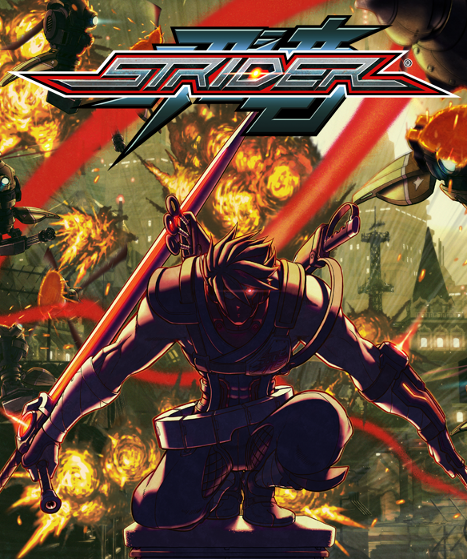
The 2014 version of Strider is a reboot of an Arcade/Genesis and NES classic; one that was intended to be part of a multimedia blitz with a companion manga series that was published a few months beforehand. It concerns the Strider Hiryu as he attempts to take on the tyrannical Grand Master in the anachronistically advanced Kazakh City. This new Strider uses the same plot as the original Arcade game, but borrows from the non-linear NES version (and its NES contemporary Metroid) to create an open-world SpaceWhipper variant of Kazakh City with many items and upgrades placed behind secret walls or barriers that are inaccessible until the right power-up has been found. Many of the same bosses return, including the jetpack-wielding bounty hunter Solo, and the original's frantic pace remains intact as Hiryu mows down legions of robotic enemies with his lightsabre-esque "cypher" blade in his pursuit of the Grand Master.
At times, though, this pace is ruined by some lackluster open world game design. For one, there is no fast travel, and if the player wishes to revisit an earlier region of Kazakh City for items after acquiring the power-up necessary to reach them, they will have to walk back. This is exacerbated by just how long some of these areas are even with Strider Hiryu's increased celerity (which makes "strider" kind of an odd title, come to think of it). Sometimes the player needs yet another power-up before backtracking to certain areas even becomes possible. As with Metroid, the important upgrades are all in the player's path as they're diverted from one location to the next due to a number of obstacles, but boons like additional health or stamina or throwing kunai and other useful but optional upgrades are all desirable if a boss is coming up and the player wants an extra edge. Having it be so difficult to go back and recover additional items when they become accessible is detrimental to how these open-world games are enjoyed these days. Even Symphony of the Night had warps. The fact is, without the pace-killing backtracking, Strider would be an otherwise excellent modern realization of the original material. I played it on its hardest initial difficulty and enjoyed its level of challenge, at least whenever it wasn't kicking my ass, so it's dispiriting when it opts to waste time so unnecessarily.
Metal Gear Solid 4
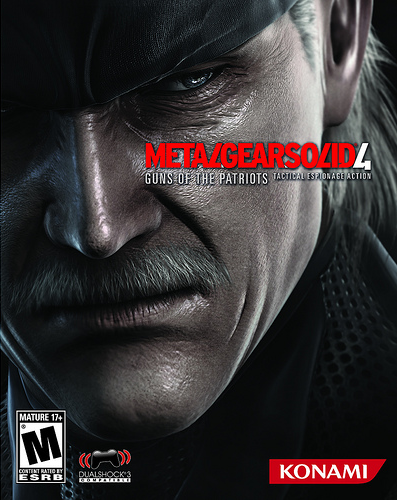
Metal Gear Solid 4 is a curious example when considering whether or not a game is wasting the player's time. While it's heavily stacked with loooong cutscenes and its stealth gameplay is often of the patient, ponderous kind, you could argue that the game itself never believes it's wasting your time even when it so totally is. It, or rather director Hideo Kojima and the other designers at Kojima Productions, assumes every one of its 30-minute-plus briefing cutscenes are crucial for the information and comic relief they convey (besides the first one, I guess) or that slowly stalking an idiotic resistance member through some unnamed Eastern European city is important atmosphere-building or that watching one of the game's quartet of psychopathic "Beauty" bosses writhe around on the ground sensuously moaning for five minutes is vital to, uh, understanding their psychological pain and grief(?). With all that considered "Don't Waste the Player's Time" becomes a little more subjective here, as sitting through ridiculous cutscenes is half the reason people play these games. Maybe more than half. The gameplay too, due to its option-rich nature, can be as slow and deliberate as the player wants it to be, with the exception of the aforementioned forced stealth sequence. The game rewards you for choosing to silently and unhurriedly sneak through regions with huge "Drebin bucks" rewards for not setting off alerts or killing anyone, though the player can just as easily run through every region guns-blazing and flip the bird to subtlety. Frankly, I feel subtlety flies out the window as soon as you have a mech fight and Mount Snakemore shows up.
The most important thing I can say about this particular example and how it pertains to this maxim is that Hideo Kojima is very much the type of maverick auteur that would ignore any core tenet of game design, if one were said to exist. If it became mandatory to emblazon "Don't Waste the Player's Time" on a plaque on the wall of the office of every game designer, Kojima would be the one most likely to toss it away if, at any point, it stood in the way of his vision. Or, perhaps more likely, he would paste photos of Japanese models in bikinis over the plaque to make it say "Do It For Her".
Legend of Grimrock 2 & Burnout: Paradise
The next two games are sort of mirror opposites in terms of discussing modern game design. One is a highly regarded but slightly older game that has seen many imitators that brought with them multiple minor improvements to the blueprint it created, while the other is a very recent game that is deliberately trying to be an homage of a practically ancient genre-defining classic.
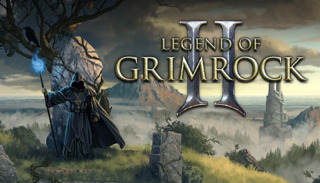
Legend of Grimrock 2 is the latter game: a throwback that hearkens to the days of the four-directional dungeon crawlers like Eye of the Beholder, Lands of Lore: The Throne of Chaos and Dungeon Master. In ye olden times, this rigid grid-like movement presented the illusion of a 3D space: enemies would seem to walk towards you in real-time, forcing you to anticipate their arrival by preparing spells and hovering over the attack button (or just legging it if the beastie was a little too much for your party for the moment). Grimrock 2, like its predecessor, is already a fully 3D game that simply adheres to this movement limitation for the sake of genre verisimilitude. This is but one example of how Grimrock 2 essentially finds ways to make itself far less than it could be because it feels honoring the conventions of an older genre of game is more important than providing an otherwise standard modern RPG experience. Mobility is limited, attacks and spellcasting all have real-time cooldowns, in-game economies and trading are non-existent and the player can even opt to play without the resurrecting crystals or auto-mapping software if they feel the old-school presentation isn't authentic enough.
One thing the game does insist on including which its forebears went without is a fast travel system. Early on, after the initial tutorial areas, Grimrock 2 takes its biggest divergence from its predecessor in presenting a myriad number of paths to follow. The game is built in such a way that the player is purloining a series of McGuffin gemstones from every corner of the island, so they are encouraged to take any route they desire to find them. If one is guarded by a difficult boss monster or a particularly devious spike trap, the player is equally encouraged to explore elsewhere and come back to it later once their party is stronger and better equipped. In order to mitigate the amount of back-and-forth this open-world format requires, the game has a convenient hub area that links to four major locations across the island. This hub area even has a bunch of niches to store items the party can't carry but might later need. Grimrock 2 forsakes modern game design to deliver an accurate rendition of an older style of CRPG, but it doesn't forsake the necessities - those that respect the player's time. Convenient crystals and auto-mapping, status effects that eventually wear off and a teleportation hub are just a few of these anachronisms that the game insists on including. The developers recognize how frustrating the game would be without them, possibly feeling that they were a necessary sacrifice on the altar of old-school fidelity for the sake of the player experience.
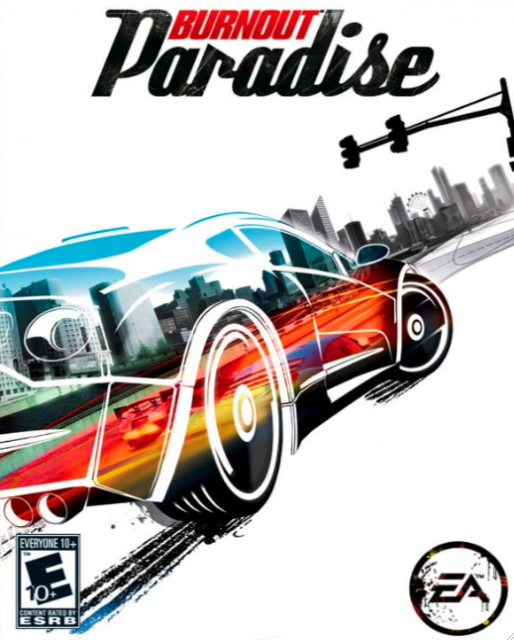
Burnout Paradise is the other game I was talking about. Frequently banded about as perhaps the best extant Arcade/open-world racing game, Burnout Paradise is all about finding your own bliss in a large open world filled with optional challenges. These challenges add to one's progress, ticking down a quota for the next license which in turn opens up more of the game's more demanding trials and faster vehicles, but the quota is always far smaller than the total number of challenges available at any one time. It isn't until the player pursues the very last rank - a rank that appears after the credits have already rolled and is simply there for the completionists - that they really have to complete every challenge on the map. There's a tremendous amount of fun associated with Burnout Paradise, whether you're T-boning competitors in the Carmageddon-esque Road Rage mode and watching them disintegrate in slow-motion or attempting to find as many big-ass ramps and corners suited for drifting to earn big scores and multipliers in the Stunt Runs. Even the collectibles, usually the most throwaway aspect of any open-world game, are all closely associated with the core gameplay: yellow breakable barriers reveal useful short-cuts for the races and time-trial Burning Routes; red billboards that point the way to other short-cuts and are super satisfying to smash through; blue markers that indicate huge leaps that score dividends in the Stunt Run mode.
If Burnout Paradise has aged poorly at all, it's because it was made during a time when this "Don't Waste the Player's Time" rule had yet to become the primary focus behind competent game design. If the player gets towards the end of a race and screws up a turn, they don't have the finite capacity to rewind that mistake: an feature now common to any speed-emphasizing Arcade-style racing game where getting to the end of a five minute race and blowing it last-second would be too frustrating. Likewise, before a late patch added in the functionality, the player would've had to drive all the way back to an event trigger to restart a challenge they just failed. The game still doesn't allow you any fast way back to the populated city area if you happen to be way out in the boonies and you end up spending a long time with the game simply driving from point A to point B than completing challenges occasionally getting distracted with collectibles along the way. Despite being less well-regarded on the whole, Burnout Paradise's successors - such as Forza Horizon or Driver: San Francisco - have added features to lessen the amount of dead time between races and other events. They're able to take that open-world driving format and improve on it incrementally by following the maxim we're discussing today. They might not necessarily be more fun overall (no "Girlfriend" on the radio, for one) but those improvements mean they might be more palatable to a modern audience.
The Fall

The last game for today is The Fall: a moody and atmospheric sci-fi adventure game that concerns the AI on a highly advanced combat suit. The occupant of the suit is not responding, and so the AI grows increasingly concerned for their well-being, to the extent that it starts to circumvent its own programming in order to keep them alive. The game cleverly explores the boundaries of rules, especially the immutable ones all cybernetic organisms must follow as per Asimov's Laws of Robotics, and how the player might bend them for the sake of unlocking higher functionality on the combat suit. It reminded me of how Edna & Harvey: Harvey's New Eyes would present puzzles in which the protagonist, Lilli, would have to undo hypnotic blockers on "disobedient acts" (like "playing with fire" and "talking to strangers") to complete the next puzzle.
The Fall respects the player's time by being concise. It can sometimes be a little much to walk around its lengthy corridor areas to find necessary clues, hotspots and inventory items, but the game has a brief run-time and doesn't outstay its welcome. In fact, like many recent Indie games, it's built to be episodic: creating shorter "chapter"s that are able to keep the developer solvent until the next chapter has been completed and released. As an adventure game, it's naturally going to delay and frustrate its players for a time, though it has created its scenarios without a whole lot of ambiguity or moon logic behind their solutions. Ensuring that the player is only carrying around a handful of objects at any time removes that "use everything on every hotspot and hope for magic to happen" phenomenon so pervasive in older adventure games.
The Bit at the End
Though I didn't really need seven examples, where a few would suffice, this new design mantra is an increasingly ubiquitous one. While games modernize by exploring new ideas and adopting new technology, most are happily refining pre-existing genres and features in such a way that the player is rarely frustrated or bereft of direction for long. It's not the same as "dumbing down" games either; the difficulty in game design now is creating a lot of these convenience improvements without sacrificing a game's challenge or, in the case of games where you're more walking around and looking at stuff, at least ensuring that the experience is more impactful in its conciseness. If a "walking simulator" wants to dawdle around for the sake of building atmosphere, its designer(s) has a balancing act ahead of them just as demanding as those tweaking the cast of a fighter game so no one combatant stands head and shoulders above all others. Everybody's Gone to the Rapture was a notorious recent example, because its languid gait didn't respect the player's time. Gone Home, conversely, let you zip around its eponymous house and scrutinize those rooms as much as you wanted before moving the plot along by finding the next locked room or hallway.
"Be fun" will continue to be at the forefront of a lot of game design moving forward, and this will undoubtedly always be the case with video games, but "don't waste the player's time" is a far more universally-applicable rule that effectively encompasses every increasingly divergent strain possible with this medium and will continue to fit whatever new forms video games eventually take.
Thanks for reading, and please feel free to point out in the comments below the irony of a 4000 word blog that emphasizes the importance of creating content that respects the consumer's time.
